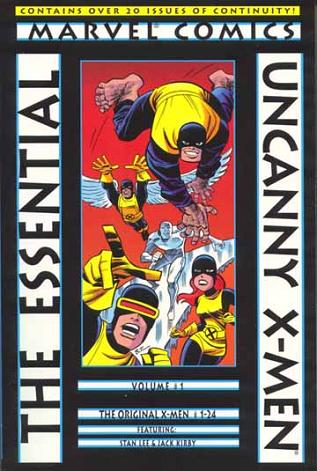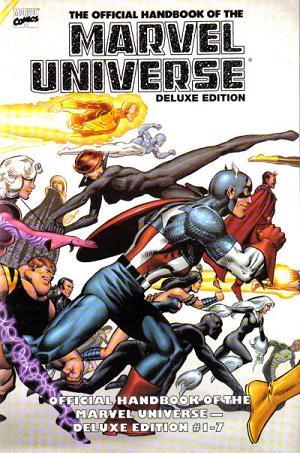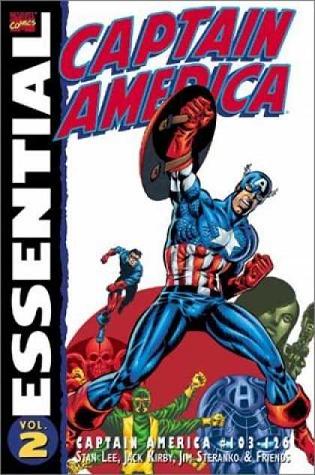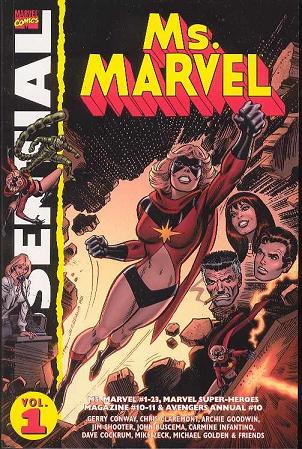
Essential Uncanny X-men Vol. 1
Stan Lee, Jack Kirby, Werner Roth, Roy Thomas and friends
Reprints: Uncanny X-Men #1-24 (September 1963 – September 1966)
Get this for: The X-Men before they were famous — three stars
The X-Men debuted in the same month as that other Marvel superhero team, the Avengers. But whereas the latter team featured five heroes already known from their solo adventures, the X-Men, also with five members, had never been seen before. What’s more, unlike every other Marvel hero the X-Men had no origin, but where born with their powers, socalled mutants. From the start they were different, using their powers not to fight crime, though they did, but to protect the world from evil mutants, to find those mutants still unaware of their powers and to show normal people that mutants could be trusted. It was a far more science fictional approach than Lee and Kirby had tried in any of their other titles, even in the Fantastic Four.
I’ve read many of the earliest stories in this volume before and always found them a tad on the tedious side. This is sadly still the case now. The premise of the series is good, but how it’s worked out is not so much. As you know, there’s professor Xavier’s school, where he trains the X-Men and is on the lookout for potential mutants or mutant threats. The first eight-nine issues all follow the same pattern: some mutant menace makes himself known or is found by professor X, the X-Men try to defeat it but are outmatched, are rallied by Prof X and overcome it. So the first issue has the X-Men going after Magneto, in the second they tackle the Vanisher, in the third the Blob, in the fourth it’s Magneto again, with new allies the Brotherhood of Evil, followed with Magneto teaming up with Namor and so on.
Character wise, especially at the start the old prof is the most annoying character in the series: either the deus ex machina that solves every difficulty at the end of an issue, or the distant trainer/mentor exhorting his pupils to do better. The focus on the X-men’s training in the first seven issues or so doesn’t help either. Another annoying character is Scott Summers, pining for fellow student Jean Grey and whining endlessly about his deadly powers and how he needs to keep his self control.
Things liven up a bit when the The X-Men move into the double figures. In issue ten the X-Men find the Savage Land and meet Ka-Zar, in issue eleven the Stranger, followed by the introduction of the Juggernaut in a fine two part story. The introduction of the Sentinels comes straight after and takes no fewer than three issues to be told. This shift towards longer, multi issue stories works well for the X-Men: they’re much more fun. Gone is any pretence at the original mission of the X-Men though.
What also works out well for the X-Men is the shift in artists, from Jack Kirby to Werner Roth. Roth’s art style is somewhat cruder than Kirby’s, but suits the X-Men better. Kirby never seemed to get a good handle on them. His artwork is always no worse than good, but doesn’t gel the way it does with e.g.
the Fantastic Four. Roth’s artwork doesn’t have the same technical proficieny of Kirby’s, but his fluid lines do seem to work better here. Another newcomer, Roy Thomas, gets to handle the writing duties from issue twenty, which also helps to freshen up the series. Unfortunately they’re only just starting to get up to steam together when the volume ends…
The X-Men was never the best Marvel Silver Age title and this is certainly not an essential volume. Interesting enough to read, but I won’t reach quickly for this again.



